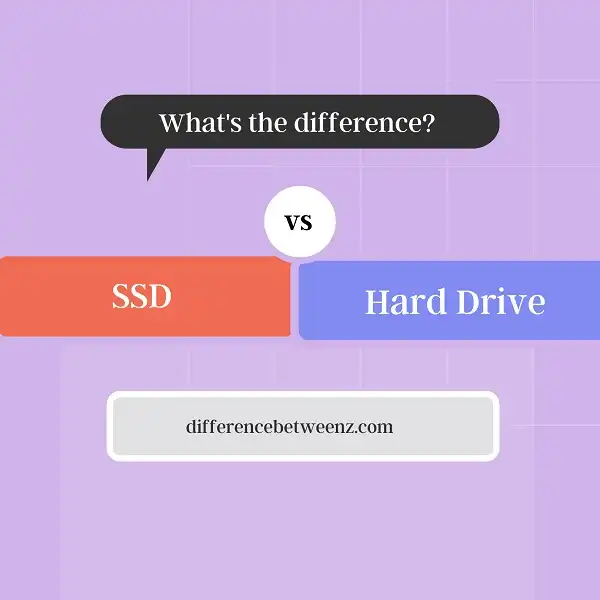When you’re shopping for a new computer, one of the biggest decisions you’ll have to make is between an SSD and an HDD. Both have their pros and cons, but what’s the difference between them? In this post, we’ll break down everything you need to know about SSDs and HDDs so you can make the best decision for your needs.
What is SSD?
A solid-state drive (SSD) is a data storage device that uses solid-state memory to store persistent data. Unlike a traditional hard disk drive (HDD), an SSD does not have any moving internals and instead relies on microchips. This makes SSDs much faster than HDDs, which need to physically move in order to access data. Additionally, SSDs are much more resistant to physical shock and wear-and-tear, making them a more reliable option for mobile devices. However, SSDs are generally more expensive than HDDs and have smaller storage capacities. For these reasons, SSDs are typically used in high-performance devices or applications where speed and durability are paramount.
What is Hard Drive?
Hard disk drives (HDDs) are devices used for storing digital information. They consist of one or more spinning disks, or platters, coated with magnetic material. Data is stored on the disk in the form of tiny magnetized regions. When an HDD is connected to a computer, the disk spins and a read/write head on an arm accesses the data. HDDs are widely used for storing data in computers, as they are typically cheaper and have a larger capacity than other storage devices such as solid-state drives (SSDs). HDDs are also used in a variety of other devices such as video recorders and gaming consoles.
Difference between SSD and Hard Drive
- A hard disk drive (HDD) is an electromechanical data storage device that stores and retrieves digital information using rapidly rotating disks (platters) coated with magnetic material. An SSD performs the same basic function as an HDD, but data is instead stored on interconnected flash memory chips.
- One key difference between SSDs and HDDs is that SSDs have no moving parts, which means they are much less susceptible to physical shock and vibration. This can be important in mobile applications, such as laptops and tablets, which are often subject to jostling during use. SSDs are also typically lighter than HDDs of the same form factor.
- Another difference is that SSDs typically consume less power than HDDs because there are no moving parts to activate. This can result in longer battery life in portable devices or reduced power consumption in data centers, which can lead to lower operating costs over time. Additionally, SSDs tend to produce less heat than HDDs because they do not contain spinning disks.
- Performance is another key distinction between SSDs and HDDs. Because there are no moving parts in an SSD, data can be accessed much more quickly than it can from an HDD. Sequential read and write speeds for HD
Conclusion
HDDs have spinning disks that use magnetic fields to store data, while SSDs use microchips. This means that HDDs are larger, slower, and louder than SSDs. Additionally, because HDDs rely on physical movement to read and write data, they can be damaged by bumps or drops more easily than SSDs.


